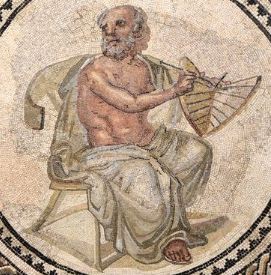Zoology is a branch of biology that studies the animal kingdom and animal life in general. It involves both the investigation of individual animals and their constituent parts, their molecular level, animal populations, Faunas, the relationship of animals to each other, to plants, and even to the non-living environment. Therefore, this broad range of studies results in some separation of the specialties within the study of zoology. However, the conceptual integration in the study of living things that have taken place in recent years has emphasized the systemic and functional unification of life rather than its diversity.
The prehistoric man’s survival as a hunter described his relationship with other animals that were their source of food as well as danger. As the human’s cultural heritage developed, animals were variously integrated into man’s folklore as fellow living creatures. Animal domestication has forced men to take a systematic view of animal life, particularly after the urbanization, which requires an extensive and constant supply of animal products.
Early Study of Animal Life
Aristotle’s zoology found his legacy as the father of biology, and as the first person to introduce the early scientific and empirical techniques to this study. His zoology was primarily built on research and observations, making him part of the records of the long history of biology. Aside from Aristotle, there were also former Greek philosophers like Anaximander and Theophrastus,who took their part in the history of zoology.
Aristotle’s Zoology
Aristotle, Plato’s pupil, became interested in the natural world, including numerous meteorological and geographical aspects, while his most significant contribution to science was the field of natural history and biology. Although earlier scholars made their observations on flora and fauna, Aristotle was the first to use an early scientific technique, and record-keeping set as a precedent for future researchers in the field.
Subsequently, Aristotle dissected bird’s eggs at different developmental stages. This experiment was to understand the order in which the organ of the growing embryo developed in an early observational biography experiment. During the experiment, he saw that the heart was the first thing to be developed, followed by the other organs. In contrast to a common belief that all the organs had been present from conception and were growing in size, this fed his theory of Epigenesis.
In addition, on his further study of zoology, he suggested the ‘Ladder of Life.’ This is a hierarchy in which animals were finally classified according to their function and complexity with other organisms on the ladder and humanity on the apex. Aristotle suggested eleven levels, believing that their position was determined by the birth form of the creature.
Some of the studies and observations of Aristotle are:
- History of Animals
- Movements of Animals
- Animals Lifespan
- Animal Progression
- Life and Death
- Animals Age
Anaximander’s Zoology: Human’s Relationship to Animals
Anaximander the Milesian, a pupil of Thales, is often referred to as the first proponent of the theory of evolution. However, although Anaximander’s observations were slightly odd and in contrast to Charles Darwin’s theory, Anaximander was the first scientist to introduce the relationship between humans and animals. Some of his exact points about the evolution of nature and the origins of humankind sound almost comical, but the underlying theory and concept behind his idea were rather informative.
Anaximander’s theory has a great deal of debate between historians about the different fragmentary sources and interpretations, but his theory definitely follows a chain of reasoning. While the Greek philosopher does not believe ‘uncaused causes,’ Anaximander then attempted to justify the origin of humankind. He pointed out that the first human must have come from somewhere.
Here are some of what Anaximander has pointed out:
- Anaximander observed that humans took longer to raise in comparison to animals and that a human child could not find food for themselves. Humans may, therefore, come from another animal species.
- Primitive animals originated from the moisture that comes from the heat of the sun, and early humans looked like fish.
- Animals that swim in the water have spiny skins. This skin split whenever they emerged into the land and in accordance with their environment.
- Thus, fishes and men were not created at the same time, but fish were the first to give birth to humanity through this process of change.
Also, in a document written in the Latin text, it was said that the fish emerged from the water, and their skins burst, exposing humans who had grown to puberty inside of the fish. However, this is dissimilar from other sources, for it was reinforced by the fact that this version does not contain direct quotes, unlike the others. If this latter source is disproved, you can see the origin of the proto-evolutionary theory, which is definitely the cornerstone of both Jean Lamarck’s and Charles Darwin’s theories. Anaximander made further contributions to the information store at the beginning of the history of biology, but this contribution was one of the most significant.
Zoology Today
Today, zoology is as diverse as the animal kingdom it studies. It extends its scope to include fields such as genetics and biochemistry, which is now considered as an integrative field that uses a wide range of methods in order to gain knowledge of the animal kingdom. For example, the genetic study of DNA from different animals can provide insights into their evolutionary history. Zoologists who focus on morphology, the structure analysis that includes muscles, bones, cells, and cellular components, use a variety of techniques first developed in the biochemistry laboratory.

